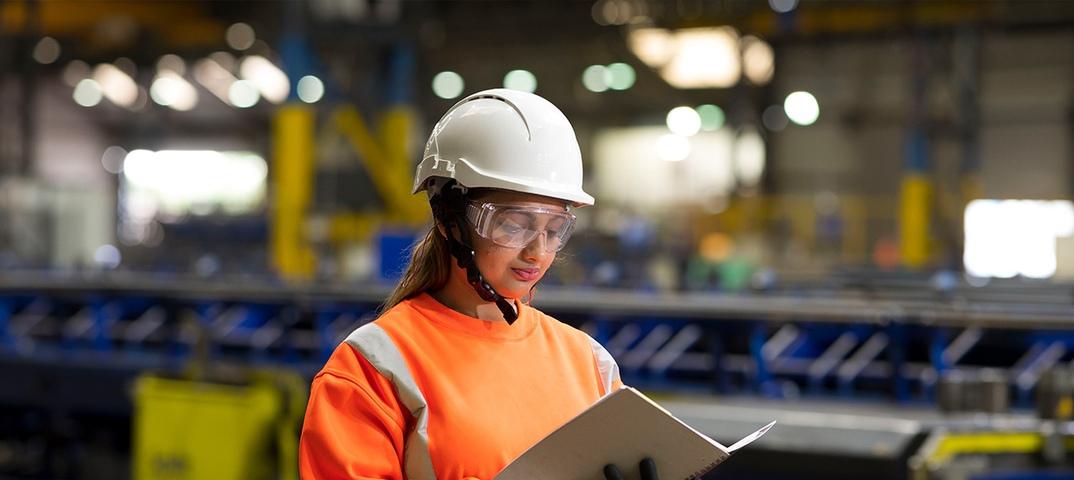Occupational health refers to the overall health and safety of workers in various occupations or work environments. It involves identifying and minimizing health risks in the workplace that could potentially impact workers' physical and mental well-being. These risks may arise due to hazardous working conditions, workplace accidents or exposure to pollutants. Maintaining high standards of occupational health is important for both employee welfare as well as business productivity and performance.
Common Occupational Health Hazards
While most workplaces aim to comply with health and safety guidelines, some occupations inevitably pose greater risks than others. Let us look at some common occupational health hazards:
Physical Hazards
Industries such as construction, manufacturing, mining etc. involve performing strenuous physical tasks that can lead to injuries. Workers are at risk of suffering falls, cuts, burns and wounds from handling heavy equipment or machinery. Repeated exposure to whole body vibration from using power tools for long periods can also damage the musculoskeletal system over time.
Chemical Hazards
Workers handling chemicals, paints, solvents, fuels etc. are susceptible to the adverse effects of inhaling toxic fumes, dust or accidental spills on the skin. Even low level long term exposure to certain substances can cause Chronic Obstructive Pulmonary Disease (COPD), asthma, or even cancer. Industries like petroleum refining, chemical production are high risk in this regard.
Biological Hazards
Healthcare, agriculture and food processing occupations entail potential exposure to bacteria, viruses and other pathogens. Workers are at risk of contracting infectious diseases through contact with blood, bodily fluids or contaminated surfaces without adequate protective gear and hygiene practices.
Psychosocial Hazards
Jobs with highly demanding tasks, long work hours, tight deadlines or lack of control over one's work can negatively impact mental well-being. Work related stress, anxiety and depression have become common occupational health issues today.
Implementing Preventive Measures
To address these risks, proactive steps must be taken by employers as well as workers themselves. Some effective preventive measures include:
Engineering Controls
Hazardous processes or tasks can be redesigned to minimize exposure through isolation, ventilation, automation etc. For example, enclosed cabins for equipment operators, local exhaust fume extraction systems.
Administrative Controls
Work practices, policies, training and monitoring play a key role. Examples include job rotation, limiting hazardous work duration, personal protective equipment (PPE) provision, health screening programs.
Personal Protective Equipment
Using suitable gloves, masks, safety gear tailored to the hazard is essential where engineering or administrative controls are not feasible. Workers must be trained on proper PPE use and care.
Safety Procedures and Training
Standard safety protocols for hazardous tasks, emergency response, waste disposal etc. must be communicated. All new employees should undergo comprehensive health and safety orientation. Periodic refresher sessions help sustain awareness.
Challenges in Implementation
While efforts are being made globally to manage occupational risks, full protection remains difficult to achieve in some situations due to challenges such as:
Lack of Resources
Smaller businesses may lack financial or technical capabilities for expensive control solutions. Governments need to support such companies through guidance, subsidies and cooperative programs.
Non-compliance Issues
Despite regulations and monitoring, some negligent employers still fail to prioritize worker welfare. Stricter punitive actions may be needed against repeated violations.
Informal Sector Vulnerabilities
Millions work in informal, unregulated sectors with minimal or no health and safety standards. Findings ways to extend protections and support to these vulnerable groups is urgently needed.
The Way Forward
Overall, upholding occupational health and ensuring safe, healthy workplaces should be a shared responsibility between various stakeholders. With concerted efforts towards awareness building, technical innovations, compliance enforcement and helping marginalized workers, it is possible to significantly minimize work-related disease and disability burdens globally. Workers also have a role to play through self-care, diligent use of available protections and immediately reporting hazards. Continuous progress on these fronts will aid both economic growth and social development worldwide.
Get More Insights On Occupational Health
Identify the language that you favor.
Japanese Korean
About Author:
Alice Mutum is a seasoned senior content editor at Coherent Market Insights, leveraging extensive expertise gained from her previous role as a content writer. With seven years in content development, Alice masterfully employs SEO best practices and cutting-edge digital marketing strategies to craft high-ranking, impactful content. As an editor, she meticulously ensures flawless grammar and punctuation, precise data accuracy, and perfect alignment with audience needs in every research report. Alice's dedication to excellence and her strategic approach to content make her an invaluable asset in the world of market insights.
(LinkedIn: www.linkedin.com/in/alice-mutum-3b247b137 )

